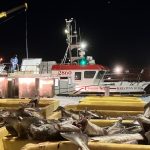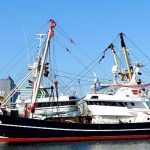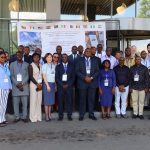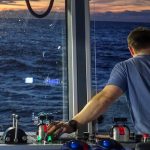The purpose and aim of the EU investment
During 2000-2006, Sweden benefited from EU support under the Financial Instrument for Fisheries Guidance (FIFG) of over € 76.5 million, out of which some € 11.5 million were attributed to the two Objective 1 programmes covering the northern part of Sweden, and € 65 million to the outside Objective 1 area. By the end of November 2007, a total of 1900 projects had been supported under the three programmes, mainly decommissioning schemes, investments in processing and marketing, innovative pilot projects, fishing port facilities, and aquaculture, as well as protection of aquatic resources.
The new EU programme for 2007-2013 aims at promoting an ecologically, economically and socially sustainable fisheries sector in Sweden by creating a balance between fish resources and fleet capacity, increasing profitability in the fisheries sector, promoting employment in rural areas in relation to the fisheries sector, decreasing the negative environmental effects brought about by the fisheries sector and ensuring the sustainability of both the environment and natural fish stocks.
Priority axes
Priority 1: Adaptation of the EU fishing fleet
This priority axis aims at adjusting the Swedish fishing fleet to the situation of the fish stocks, as well as improving the profitability of fishing companies.
Measures foreseen include support for the permanent and temporary cessation of fishing activities, and investments in modernisation on board vessels, including engine replacement to improve energy efficiency and introduce more selective fishing methods. Socio-economic measures will facilitate the entry of young fishers into the sector and will provide compensation for loss of jobs due to the permanent cessation of fishing activities of the fishing vessels concerned. Measures to improve training for fishermen and diversification into other areas than fisheries are also envisaged.
Priority 2: Aquaculture, inland fishing, processing and marketing of fishery and aquaculture products.
The objective of this axis is to contribute to long-term employment in the aquaculture and processing sectors, by developing sustainable aquaculture and by enhancing the competitiveness of fisheries products on the market, mainly through productive investments, but also using aqua-environmental, public and animal health measures. For inland waters, the goal is to achieve a balance between fishing capacity and current fish stocks. In addition to investments in facilities and on board fishing vessels, support for inland fishing will also cover compensation for reassignment of vessels to other activities and for temporary cessation of fishing activities.
Priority 3: Measures of common interest
This axis supports measures of common interest with a broader scope than measures normally undertaken by private enterprises and which help to meet the objectives of the Common Fisheries Policy. Special focus is placed on protection and development of aquatic fauna and flora, development of fishing ports and landing sites, promotion of marketing measures, and pilot projects, as well as collective actions, including support for training opportunities and exchange of experience and knowledge on fishery issues.
Priority 4: Sustainable development of fisheries areas
This axis aims at facilitating the sustainable development of fisheries areas and at creating new jobs through initiatives by local fisheries groups. To achieve these objectives, support will be given in the framework of local development strategies for the diversification of activities, the development of fishing tourism and recreational fishing, increasing value added to fisheries products, the dissemination of innovation, promoting the quality of the coastal environment, protecting natural and architectural heritage and values, as well as training for employees in the fisheries sector.
Priority 5: Technical assistance
Support is provided under this axis to ensure that the management, control, monitoring and evaluation systems of the Operational Programme function efficiently and that EFF support is implemented in an appropriate manner.
Responsible Authority and contact details
Managing Authority for the Operational Programme "Operational Programme for the Swedish Fisheries Sector"
Swedish Board of Fisheries
Mr. Axel Wenblad
Box 423
SE-401 26 Göteborg
Tel.
Fax + 46 31 743 04 44
Email:Fiskeriverket@fiskeriverket.se
Web:
Operational Programme for the Swedish Fisheries Sector for the period 2007-2013 – Operativt Program för fiskerinäringen i Sverige 2007-2013, co-funded by the European Fisheries Fund
Intervention type: Operational Programme
Financial table
Financing plan by priority axis for the period 2007-2013 (in EUR)
|
Priority axes
|
Total Public
a=(b+c) |
EFF Contribution
(b) |
National Contribution
(c) |
EFF
co-financing rate(d)=(b)/(a)*100 |
|
Priority axis 1
|
22,777,001
|
13,666,201
|
9,110,800
|
60 %
|
|
Priority axis 2
|
21,865,922
|
10,932,961
|
10,932,961
|
50 %
|
|
Priority axis 3
|
38,265,362
|
19,132,681
|
19,132,681
|
50 %
|
|
Priority axis 4
|
16,399,440
|
8,199,720
|
8,199,720
|
50 %
|
|
Priority axis 5
|
5,466,480
|
2,733,240
|
2,733,240
|
50 %
|
|
Total
|
104,774,205
|
54,664,803
|
50,109,402
|
52 %
|








